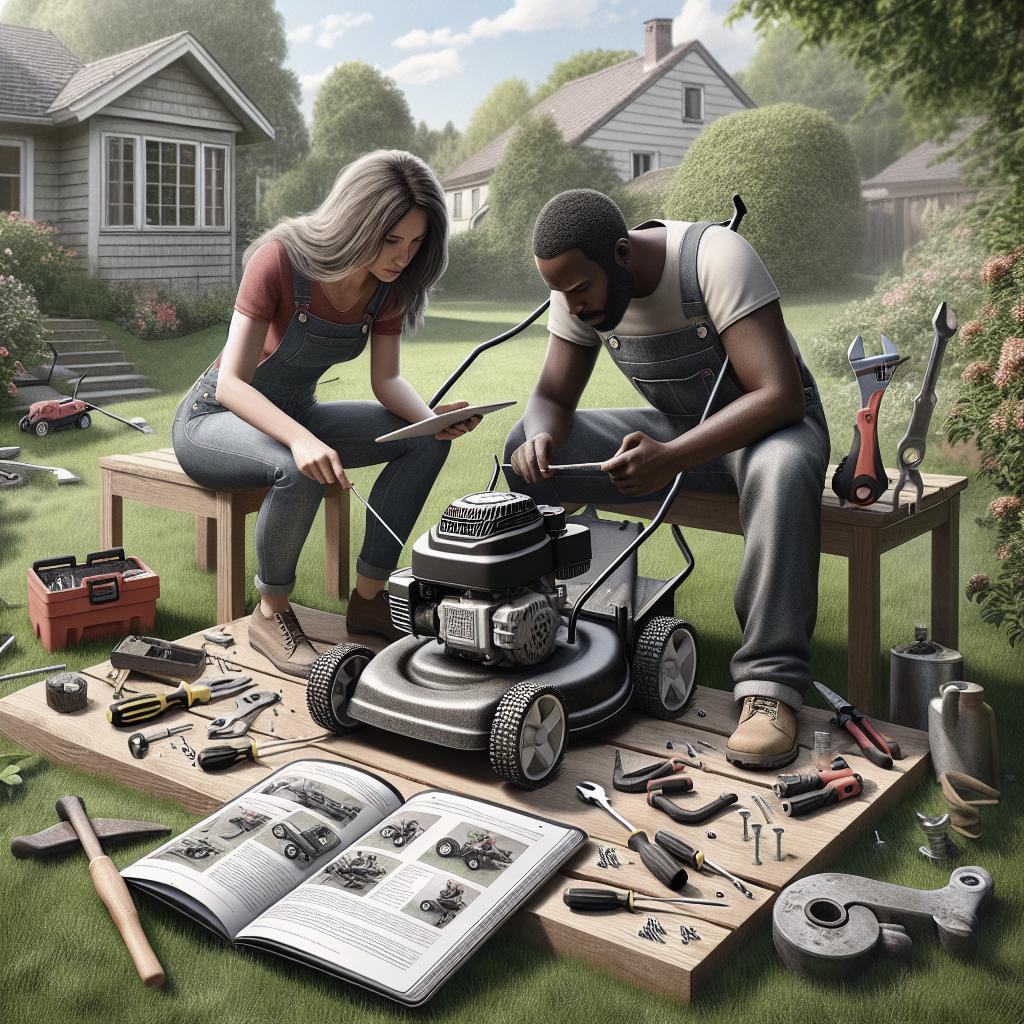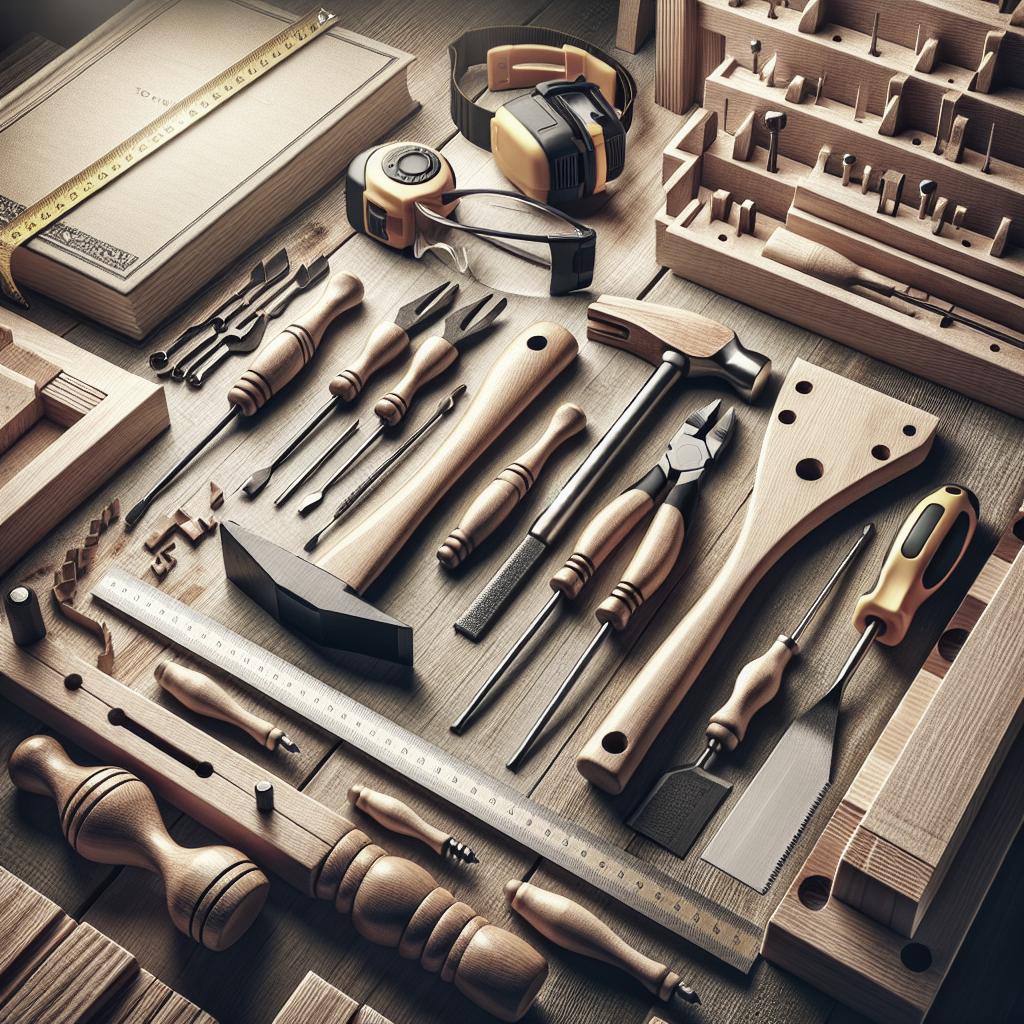“`html
How to Repair a Lawn Mower Engine
Introduction: How to Repair a Lawn Mower Engine
Lawn mowers, like any mechanical equipment, require regular maintenance and occasional repairs. Understanding how to troubleshoot and fix a lawn mower engine can save you time and money while extending the life of your machine. This guide will walk you through the essential steps to diagnose and repair common lawn mower engine problems. From disconnecting the spark plug to cleaning the carburetor and examining the fuel lines, each step is designed to help you get your mower running smoothly again.
Step 1: Disconnect the Spark Plug
The first step in repairing your lawn mower engine is ensuring safety by disconnecting the spark plug. This is crucial to prevent any accidental starts of the engine while you’re working on it. Locate the spark plug at the front or side of the engine, depending on your mower model. Using a spark plug wrench, carefully remove the spark plug lead from the terminal.
Once the spark plug is disconnected, inspect it for any signs of wear or damage. A fouled or damaged spark plug can cause problems such as difficult starts or a misfiring engine. Replace the spark plug if necessary to ensure optimal engine performance once you’ve finished your repairs.
Step 2: Pre Diagnosis
Before diving deep into engine repairs, a pre-diagnosis can help you identify specific issues. Start by checking for visible signs of damage or wear. Look for loose parts, oil leaks, or any unusual engine sounds when the mower was last operating. Gathering this preliminary information can help pinpoint the problem more effectively.
Next, examine the mower blades and the undercarriage for obstructions or debris. Sometimes, the issue may not be with the engine itself but with the mower’s cutting mechanisms. Ensure that the blades are clean and sharp, which can affect the mower’s efficiency and overall performance.
Step 3: Ignition System
Once the preliminary checks are complete, focus on the ignition system. This system generates the power needed to start the engine. Begin by examining the ignition coil and ignition switch for any signs of damage. A faulty ignition switch can prevent your mower from starting or running consistently.
If the ignition components appear defective, consider using a multimeter to test for continuity and voltage. This can help determine whether the ignition coil or switch requires replacement. A well-functioning ignition system is vital for smooth engine operation, so address any issues found during this step.
Step 4: Removing the Flywheel
Accessing the internal components of the engine may require removing the flywheel. The flywheel is crucial for maintaining inertia while the engine is running. Begin by loosening the flywheel nut using a wrench, but be cautious since it’s typically held in place with significant force.
Use a flywheel puller tool to lift the flywheel from its shaft gently. Proceed slowly to avoid damaging any keyways or other engine parts. This process provides clear access to areas such as the ignition coil and lets you inspect the flywheel for any damage or wear that might affect engine performance.
Step 5: Cleaning the Carburetor
The carburetor regulates the fuel and air mixture necessary for combustion. Over time, debris and deposits can clog the carburetor, affecting engine performance. Begin by removing the air filter cover and then detaching the carburetor from the mower, taking care to note its original alignment.
With the carburetor removed, use a carburetor cleaner spray and a soft brush to remove any dirt or deposits. Pay particular attention to the float bowl and needle valve, as these areas often gather significant residue. Once cleaned, reassemble and correctly reattach the carburetor, ensuring it’s tightly sealed to avoid air leaks.
Step 6: Fuel Tank and Lines
Next, evaluate the fuel tank and fuel lines for blockages or leaks. Remove the fuel tank cap and check the quality of the fuel inside. Stale or contaminated fuel can hinder performance and should be replaced with fresh gasoline.
Inspect the fuel lines for cracks or leaks, which can prevent the engine from receiving an adequate fuel supply. Replace or repair any compromised lines. This step is crucial, as a consistent fuel flow is necessary for efficient engine operation and to prevent overheating or damage.
Step 7: Intake and Exhaust Valves
The intake and exhaust valves ensure proper airflow into and out of the engine. If either valve fails, it can lead to inefficient combustion and power loss. Remove the valve cover to access the intake and exhaust valves, taking notes of their condition and any unusual wear.
Using a valve spring compressor, remove the springs and seals around the valves for a thorough inspection. Clean any carbon deposits and check for bent or burnt valves that need replacement. Reassemble the valve components carefully, making sure all parts are seated correctly to avoid leaks.
Step 8: Spark Arrestor
Inspecting the spark arrestor prevents potentially dangerous emissions. The arrestor is located on the engine’s exhaust and often accumulates carbon build-up. Remove the arrestor and clean it with a wire brush to eliminate any obstructions that could impair engine performance.
A clogged spark arrestor can also affect the mower’s power output, so it’s important to address any build-up promptly. If the arrestor appears damaged beyond repair, replacing it is essential to ensure safe operation and adherence to environmental regulations regarding exhaust emissions.
Step 9: Removing the Piston
In cases of persistent engine trouble, inspecting the piston may be necessary. Disconnect the connecting rod and carefully slide the piston out of the cylinder. Examine the piston for damage such as scoring, which could indicate insufficient lubrication or overheating issues.
If damage is evident, this is a good time to replace the piston rings or the piston itself. This will reduce blow-by and oil consumption, thereby improving engine efficiency. Ensuring the piston is in top condition is critical for optimal power and smooth engine operation.
Next Steps
| Step | Description |
|---|---|
| Disconnect the Spark Plug | Ensures safety by preventing accidental engine starts. |
| Pre Diagnosis | Identifies visibly worn or damaged components of the mower. |
| Ignition System | Examines ignition coil and switch for continuity and faults. |
| Removing the Flywheel | Facilitates access to internal engine components. |
| Cleaning the Carburetor | Removes debris and deposits to ensure proper fuel-air mixture. |
| Fuel Tank and Lines | Assesses fuel quality and integrity of fuel lines. |
| Intake and Exhaust Valves | Checks for proper airflow, carbon deposits and valve damage. |
| Spark Arrestor | Prevents carbon build-up and ensures safe emissions. |
| Removing the Piston | Inspects for damage and replaces if necessary to improve efficiency. |
“`


